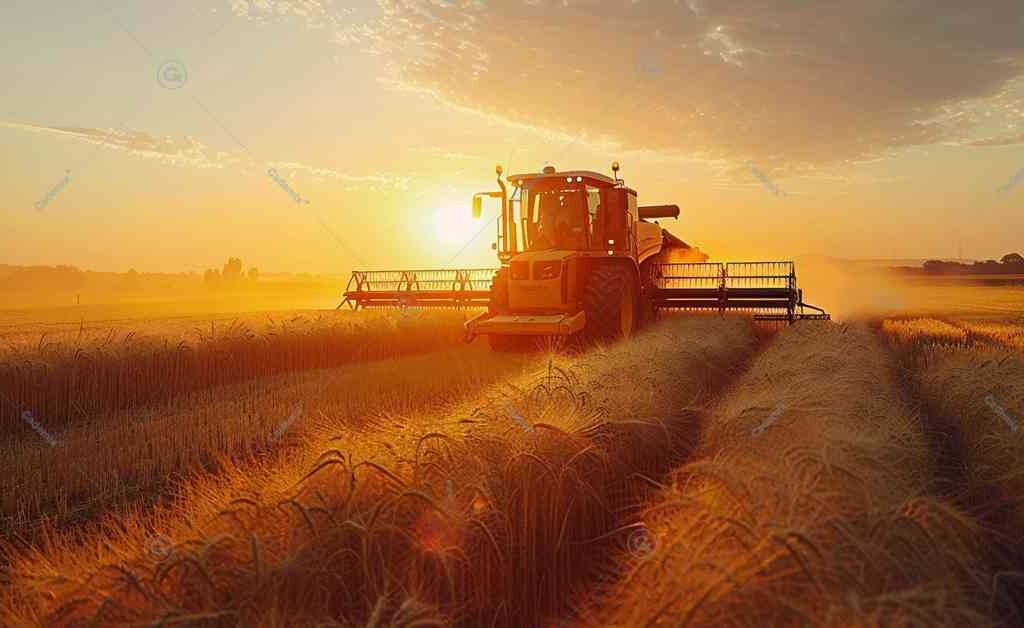The Agriculture Department, often referred to as the Ministry or Department of Agriculture, plays a crucial role in shaping agricultural policies, supporting farmers, and ensuring food security. As the backbone of any nation’s agricultural sector, this governmental body is responsible for a wide range of activities, from research and development to policy implementation and farmer support. This comprehensive overview delves into the various functions, initiatives, and impacts of the Agriculture Department, highlighting its significance in modern agriculture.
Keywords: agriculture department, agricultural policies, farmer support, food security, agricultural research, sustainable farming, agricultural development
The Core Functions of the Agriculture Department
The Agriculture Department serves as the central authority for agricultural development and regulation. Its core functions encompass policy formulation, research and development, farmer support programs, and regulatory oversight.
Policy Formulation and Implementation
- Agricultural Policies: The department formulates and implements agricultural policies aimed at promoting sustainable farming practices, enhancing productivity, and ensuring food security. These policies address issues such as land use, crop diversification, and environmental conservation.
- Subsidies and Incentives: It provides subsidies and incentives to farmers to encourage the adoption of modern farming techniques, purchase of agricultural inputs, and investment in farm infrastructure.
- Trade Policies: The department develops trade policies to facilitate the export and import of agricultural products, ensuring competitive pricing and market access for farmers.
Research and Development
- Agricultural Research Institutes: The department oversees various research institutes and universities dedicated to agricultural research. These institutions focus on developing new crop varieties, improving pest and disease management, and enhancing soil health.
- Innovation and Technology: It promotes the adoption of innovative technologies such as precision farming, biotechnology, and digital agriculture to increase farm productivity and sustainability.
- Extension Services: The department provides extension services to disseminate research findings and best practices to farmers through training programs, workshops, and field demonstrations.
Farmer Support Programs
- Financial Assistance: The department offers financial assistance programs such as grants, loans, and insurance schemes to support farmers in managing risks and improving their livelihoods.
- Capacity Building: It conducts capacity-building programs to enhance farmers’ skills and knowledge in areas such as crop management, livestock care, and agribusiness development.
- Market Access: The department facilitates market access for farmers by establishing cooperatives, farmer markets, and online trading platforms to connect them with buyers.
Regulatory Oversight
- Quality Standards: The department sets and enforces quality standards for agricultural products to ensure food safety and consumer protection.
- Land Use Regulations: It regulates land use and zoning to prevent the encroachment of agricultural land and promote sustainable land management practices.
- Environmental Protection: The department implements regulations to protect natural resources, reduce pollution, and promote sustainable farming practices.

Key Initiatives and Programs
The Agriculture Department implements various initiatives and programs aimed at promoting agricultural development, sustainability, and food security. These initiatives address diverse aspects of the agricultural sector, from crop production to rural development.
Sustainable Agriculture Programs
- Organic Farming: The department promotes organic farming through certification programs, financial incentives, and technical support. It aims to reduce the use of chemical inputs and enhance soil health.
- Agroforestry: Initiatives to integrate trees and shrubs into agricultural landscapes help improve soil fertility, sequester carbon, and support biodiversity.
- Water Conservation: Programs focused on efficient water use, such as drip irrigation and rainwater harvesting, aim to address water scarcity and enhance crop productivity.
Rural Development and Empowerment
- Rural Infrastructure Development: The department invests in rural infrastructure projects, including the construction of roads, storage facilities, and irrigation systems, to improve farm productivity and market access.
- Women and Youth Empowerment: Special programs target the empowerment of women and youth in agriculture by providing training, financial support, and entrepreneurship opportunities.
- Community Development: The department supports community-based initiatives to promote cooperative farming, collective marketing, and shared resources management.
Food Security and Nutrition
- Food Security Programs: The department implements food security programs to ensure the availability, accessibility, and affordability of food for all citizens. These programs include strategic grain reserves, emergency food assistance, and school feeding programs.
- Nutrition Education: Initiatives to promote nutrition education and awareness aim to improve dietary habits and address malnutrition among vulnerable populations.
- Biofortification: The department supports biofortification projects to enhance the nutritional content of staple crops, such as rice, maize, and wheat, through conventional breeding and biotechnology.
Challenges and Solutions in the Agriculture Sector
The Agriculture Department faces numerous challenges in fulfilling its mandate. Identifying these challenges and implementing effective solutions is crucial for sustainable agricultural development.
Climate Change and Environmental Degradation
- Impact: Climate change poses significant threats to agriculture, including increased frequency of extreme weather events, shifts in growing seasons, and reduced water availability. Environmental degradation, such as soil erosion and deforestation, further exacerbates these challenges.
- Solutions: The department promotes climate-smart agriculture practices, such as conservation tillage, crop rotation, and agroforestry, to enhance resilience and mitigate environmental impact. It also supports research on climate-resilient crop varieties and sustainable land management techniques.
Market Access and Infrastructure
- Impact: Limited market access and inadequate infrastructure hinder farmers’ ability to sell their produce at competitive prices. Poor road networks, lack of storage facilities, and insufficient market information contribute to post-harvest losses and reduced income.
- Solutions: The department invests in rural infrastructure development, including the construction of roads, storage facilities, and market centers. It also facilitates the use of digital platforms for market information and e-commerce, enabling farmers to connect with buyers and access market trends.
Financial Inclusion and Risk Management
- Impact: Smallholder farmers often face challenges in accessing credit, insurance, and other financial services. This limits their ability to invest in farm inputs, adopt new technologies, and manage risks associated with weather, pests, and market fluctuations.
- Solutions: The department collaborates with financial institutions to develop tailored financial products for farmers, such as microloans, crop insurance, and savings schemes. It also promotes the use of digital finance solutions to improve financial inclusion and risk management.
Labor Shortages and Skill Gaps
- Impact: Labor shortages and skill gaps in the agricultural workforce hinder productivity and innovation. The aging farming population and migration of young people to urban areas contribute to these challenges.
- Solutions: The department implements capacity-building programs to enhance farmers’ skills and knowledge. It also promotes agricultural education and vocational training for youth, encouraging their participation in the agricultural sector.

Future Directions and Innovations
The Agriculture Department is continuously exploring new directions and innovations to address emerging challenges and seize opportunities in the agricultural sector. Embracing technology, sustainability, and inclusivity are key priorities for the future.
Embracing Digital Agriculture
- Precision Farming: The department supports the adoption of precision farming technologies, such as GPS-guided equipment, remote sensing, and data analytics, to optimize resource use and improve crop yields.
- Blockchain Technology: Implementing blockchain technology in supply chain management enhances transparency, traceability, and trust between farmers, buyers, and consumers.
- Artificial Intelligence: AI-powered tools for pest and disease detection, weather forecasting, and crop management enable farmers to make data-driven decisions and improve productivity.
Promoting Sustainable and Resilient Agriculture
- Regenerative Agriculture: The department advocates for regenerative agriculture practices that restore soil health, enhance biodiversity, and sequester carbon. These practices contribute to long-term sustainability and resilience.
- Circular Economy: Initiatives to promote a circular economy in agriculture focus on reducing waste, recycling organic materials, and creating value-added products from agricultural by-products.
- Integrated Farming Systems: Integrated farming systems that combine crops, livestock, and aquaculture optimize resource use, increase farm diversity, and enhance resilience to shocks.
Fostering Inclusive Growth
- Gender Equality: The department prioritizes gender equality by promoting women’s participation in agriculture, providing access to resources, and supporting female-led agricultural enterprises.
- Youth Engagement: Programs to engage youth in agriculture through entrepreneurship training, innovation hubs, and mentorship aim to attract and retain young talent in the sector.
- Smallholder Support: The department focuses on supporting smallholder farmers by providing access to markets, finance, and technology, enabling them to scale their operations and improve livelihoods.
Conclusion and Call to Action
The Agriculture Department plays a pivotal role in shaping the future of agriculture by implementing policies, supporting research, and providing resources to farmers. As the agricultural landscape continues to evolve, the department’s efforts are crucial in promoting sustainable, resilient, and inclusive agricultural practices.
If you are interested in learning more about agricultural policies, farmer support programs, or innovative farming practices, explore the resources and programs offered by the Agriculture Department in your country. For further education and professional development opportunities, consider joining the Cademix Acceleration Program. Our consultancy services and educational programs are designed to support agricultural professionals in achieving their goals and driving positive change in the sector.
Discover our Cademix Career Autopilot program and learn how we can help you navigate the complexities of the agricultural industry. For additional resources and insights, visit The Food and Agriculture Organization (FAO) and The International Fund for Agricultural Development (IFAD).


